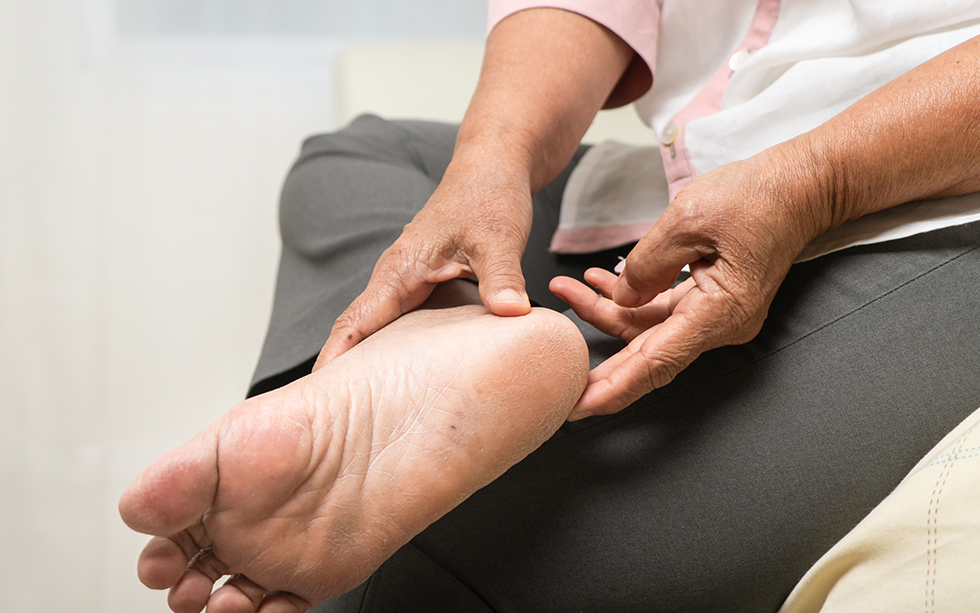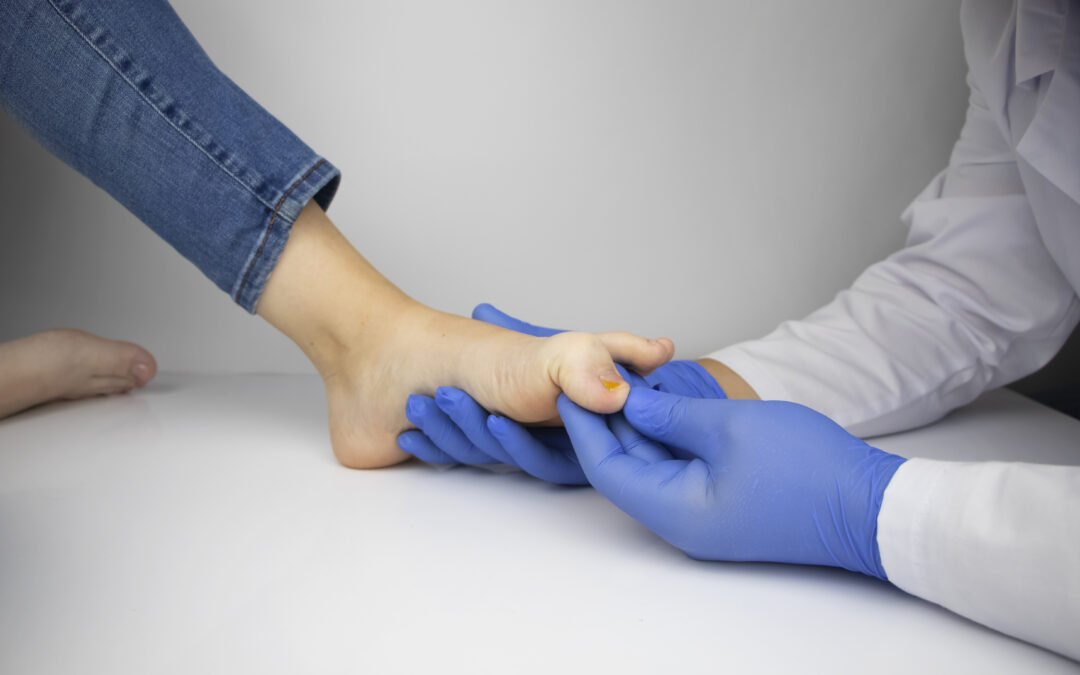Diabetes is a metabolic disorder that results in elevated glucose (sugar) levels in the blood. The glucose circulates through the arteries, touching every tissue and part of the body. Over time, the high sugar levels may cause damage to other parts of the body.
Common complications of diabetes include loss of vision (retinopathy), kidney failure (nephropathy), and foot/leg amputation (neuropathy). Specific foot complications may include poor circulation, loss of feeling in the foot, foot ulcers, non-healing wounds, infections in the foot, bone infections, gangrene, and amputation.
Prevention
To prevent or minimize diabetic complications:
- Keep an annual podiatry foot exam
- Examine the feet daily including: the top of the feet, the bottom of the feet and between the toes
- Seek medical evaluation immediately if any visible changes or concerns with the feet or legs develop
- Wash and dry the feet thoroughly, especially between the toes
- Apply moisturizing cream or lotion to dry skin on the feet daily. Do not apply moisturizer between the toes
- Maintain good control of blood sugar levels using diet, exercise, and when recommended, medication
- Schedule regular appointments with your primary care physician
- This list is not inclusive for all recommendations and not specific for all patients. Ask your doctor or visit the ADA website for further specific home care information.
Annual Podiatric Foot Exam
The American Diabetic Association recommends every diabetic to have an annual foot exam. The purpose of the exam is to prevent diabetic foot complications. During the exam, four areas of the foot extremity health will be examined, including: the circulation, the sensation, the skin (including hair and nails), and the orthopedic (bones, joints, alignment, and deformity). Electronic doppler devices may be used to evaluate the circulation in better details.
A referral to a vascular specialist may be recommended if any deficiency is detected. Both standard clinical exams and electronic doppler testing may evaluate the circulation in greater detail which enables a more accurate depiction of what is occurring.
MVS Podiatry Associates has treated diabetic feet since 1965. Our goal is to prevent diabetic foot complications. However, when foot complications do occur, our providers have the training to treat many different diagnoses, such as diabetic foot ulcers.
What is a Diabetic Foot Ulcer
The definition of an ulcer is a hole in the surface or lining of a tissue. A gastric ulcer is a hole or erosion in the lining of the stomach. Similarly, a foot ulcer is an opening in the skin of the foot. A foot ulcer may then allow bacteria to enter the foot causing an infection. The infection may spread or deepen in the foot causing tissue damage, increasing the need for hospitalization and the risk for amputation.
Even a tiny skin wound or ulcer is a reason for medical concern and should have medical evaluation and treatment within 24-48 hours. Early treatment will decrease the risk of non-healing and diabetic foot complications.
How Do You Treat a Diabetic Foot Ulcer
Each patient will require a unique treatment plan. Initially, a diabetic foot exam will be performed to establish the health of the patient’s extremity and foot wound. The exam will help determine:
- The extent of the foot ulcer
- The apparent circulation and healing ability of the patient
- If infection is present
Additional tests that may be ordered by your provider are:
- Foot x-ray
- Culture & Sensitivity test
- Doppler (circulation) test
- MRI
- Blood glucose
Treatment of diabetic foot ulcers can vary based on the diagnosis and severity. Treatment may include:
- Daily wound care
- Off-loading the ulcer or foot
- Antibiotics
- Medical shoes and or custom insoles (orthotics)
- Debridement
- Surgery
- Specific follow-ups with your provider
How Long Does it Take Diabetic Foot Ulcers to Heal
Prevention is the best medicine. When applied to diabetic foot ulcers, this includes:
- Maintaining good glucose control with diabetes
- Keeping annual and other scheduled podiatry visits
- Wearing appropriate shoe gear recommended by a podiatrist
- Inspecting the foot daily for potential ulcers
- Seeking immediate podiatric evaluation with any foot wound, foot concern, or any general change in the feet
With prevention and proper medical treatment, most foot ulcers will heal without severe complications. If you would like to request an appointment for a diabetic foot consultation, check out our website.





